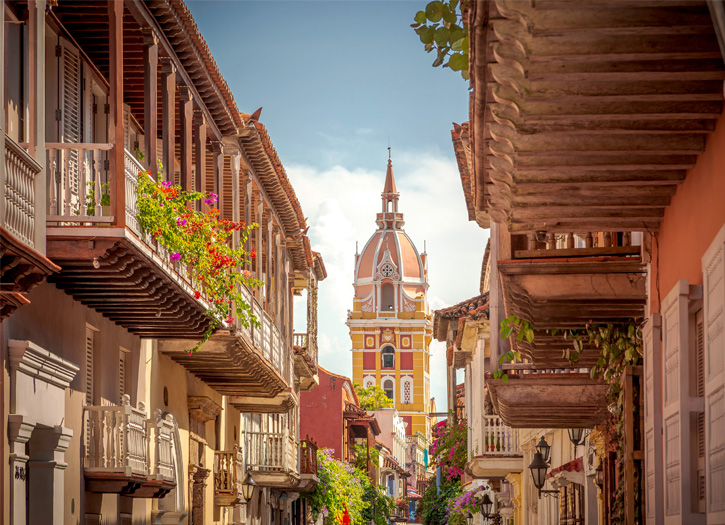On 13 March, three new cases were reported, one in Bogotá, one in Palmira and the other in Villavicencio.President Iván Duque announced that as of 16 March, entry to Colombia will be restricted for visitors who have been in Europe or Asia within the past 14 days. Colombian citizens and residents who have been in Europe or Asia can be admitted into the country, but must undergo a 14-day self-quarantine as a precaution.
On the evening of 20 March, President Iván Duque announced a 19-day nationwide quarantine, starting on 24 March at midnight and ending on 12 April at midnight.On 21 March, the Ministry of Health confirmed the first death from coronavirus in Colombia, a 58-year-old man who worked as a taxi driver in Cartagena who died on 16 March and reportedly carried Italian tourists on his taxi on 4 March.On 1 July the Ministry of Health reported 4,163 new cases out of 18,054 processed samples, with which Colombia exceeded the figure of 100,000 positive cases for COVID-19, reaching a total of 102,009. 136 deaths and 1,334 recoveries were also reported on that day, for a total of 3,470 and 43,407, respectively.
On 21 September, mayor of Bogotá Claudia López announced the lifting of several restrictions that were in place in the city to be able to mobilize or access commercial products and services which were part of the measures implemented to contain the pandemic,The only restrictions that were left in place were those regarding entry times by sectors, to prevent thousands of people from converging in the city’s public transport system at peak hours.
On 13 March, the government announced that it would close the border with Venezuela, extending the closure to all land borders shortly afterwards.With the start of the nationwide lockdown in late March, both domestic and international flights were shut down and only cargo and humanitarian flights were allowed to continue operating.On 10 May Avianca, the country’s flagship airline as well as the second largest one in Latin America, announced that it had filed for bankruptcy protection in the United States due to the impact of the pandemic. The airline, having suspended all its passenger operations since late March due to the government’s decision to close the country’s airspace, had to ground 142 aircraft, send 12,000 out of its 20,000 employees on unpaid leave.
On 28 May, the Colombian government through Transportation Minister Ángela María Orozco confirmed that international flights would remain barred until at least 31 August, but stated that they could likely resume in September.Domestic flights and intermunicipal transport, however, were expected to resume in July.From 20 March, urban mass transit systems were running at only 10–15% of their usual occupancy. As the economy reactivated, and government guidelines ordered vehicle occupation to be capped at a 35% maximum, passengers increased but ridership remained low. The operation of Transmetro in Barranquilla was suspended on the morning of 2 May until further notice as passengers were not abiding by social distancing instructions within the system and vehicles were overcrowded.
On 1 September, 38 domestic flight routes between 16 airports and bus terminals in the main cities of the country resumed operation, although bus companies will not be able to travel to any cities on which the government may place restrictions for COVID-19 reasons. There will be handwashing and temperature checks at the entrance of both airports and terminals, only travellers will be allowed to enter, and waiting rooms will require travelers to wear masks.On 3 September, the Ministry of Health issued new guidelines on urban transit, intercity and individual travel. The Resolution 1537 of 2020 allowed urban mass transit systems to run at a 50% maximum occupancy.
International flights were authorized to resume with a pilot plan from Cartagena’s Rafael Núñez International Airport to Fort Lauderdale and Miami starting from 19 September, with other international airports such as Bogotá, Medellín, and Cali gradually reopening starting from 21 September.During the first stage of reactivation, only flights between Colombia and Brazil, Ecuador, Mexico, Guatemala, Bolivia, Dominican Republic, and the United States will be operated.







Add Comment
You must be logged in to post a comment.